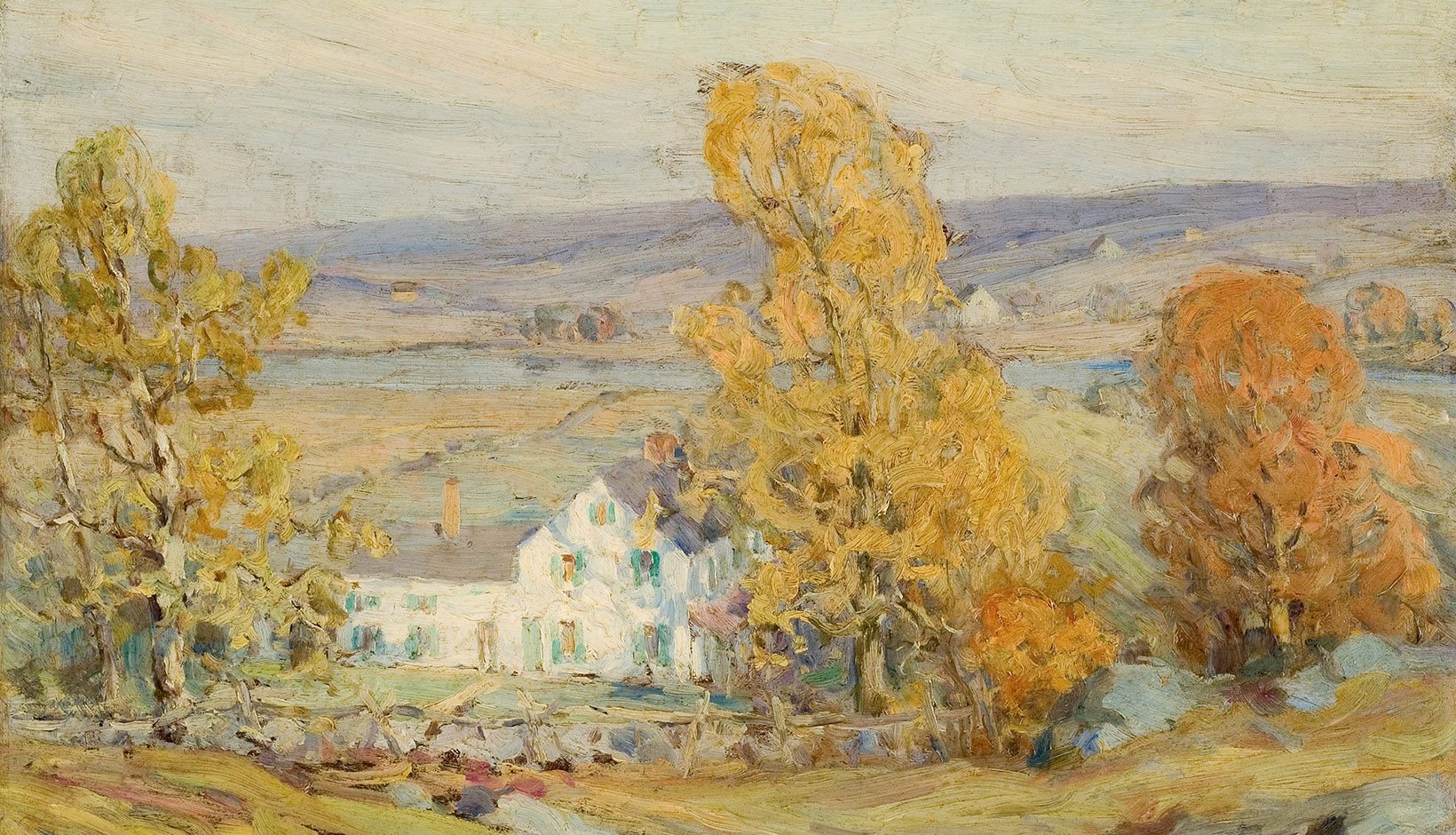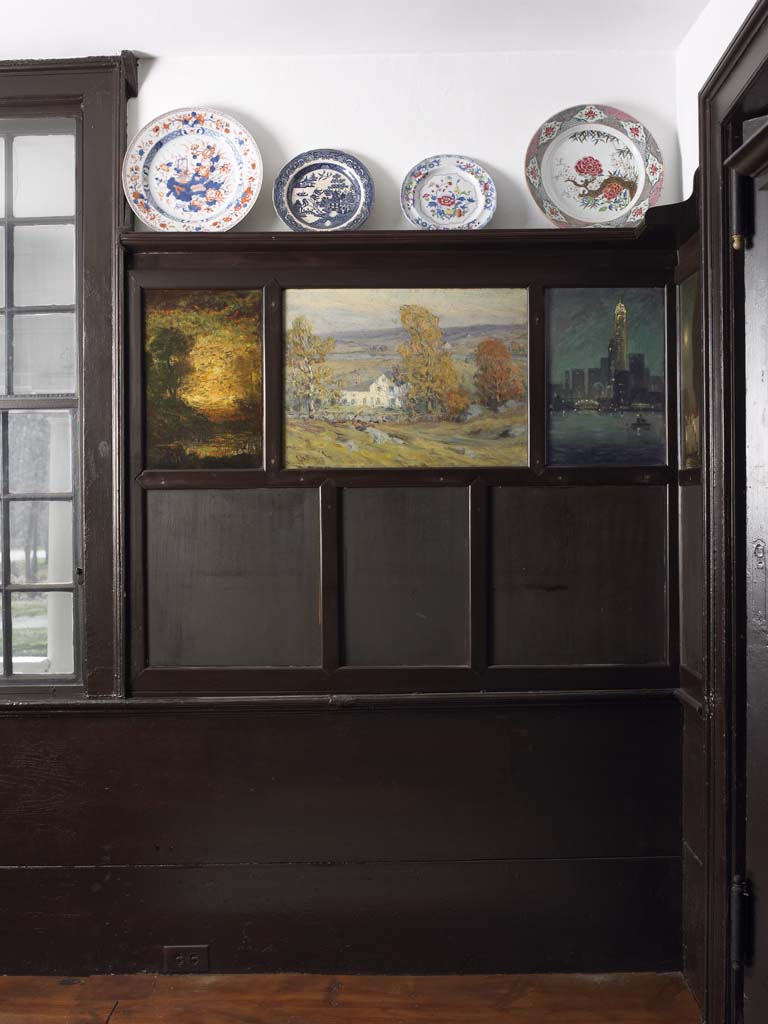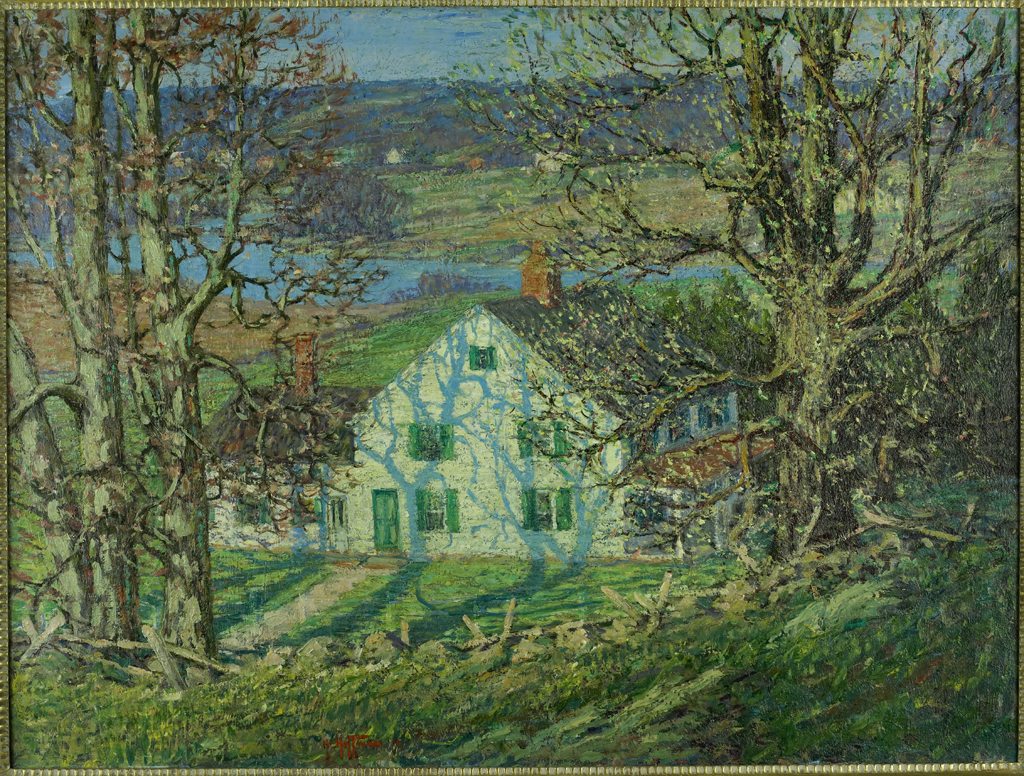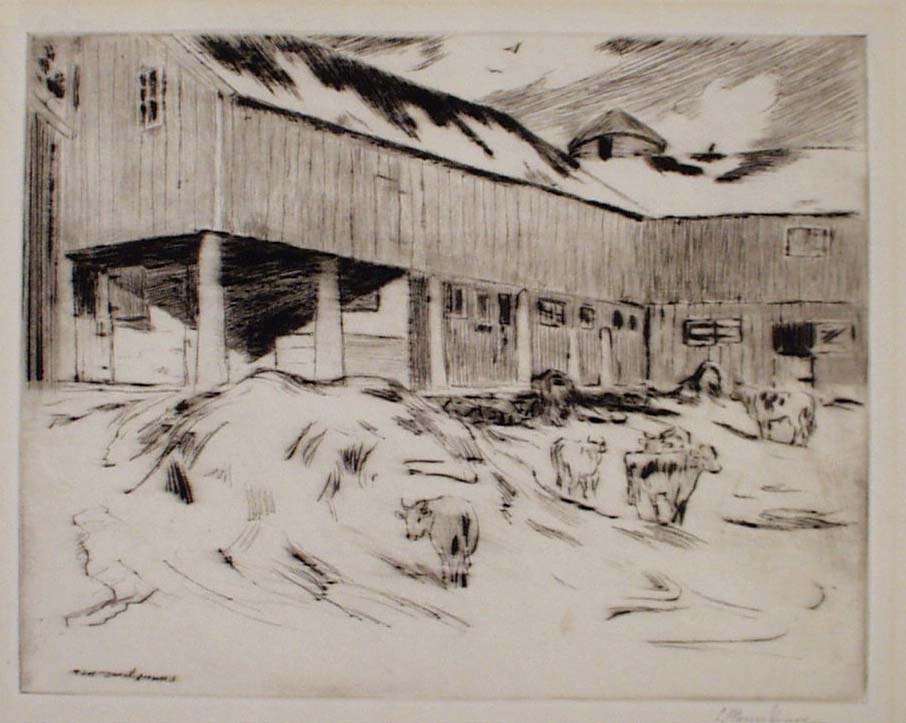Collections
In Situ: The Painted Panel
- The Museum and Café will be closed Friday, July 4.
Charles Morris Young (1869 – 1964)
Autumn
When Charles Morris Young came to Florence Griswold’s boardinghouse in 1907, he had already won important medals and critical acclaim at international expositions. A Colonial house like the one he chose to paint on a Griswold House panel is seen often in Old Lyme paintings. Colonial homes had for these artists — and their viewers — connotations of family, stability, and survival. The Colonial Revival movement, which developed after the U.S. Centennial in 1876 and gave comfort in an era of rapid, unsettling change, received much of its force from the nation’s artists.
After an early phase as a landscape painter in the Barbizon tradition of soft tonal harmonies, Young was in an Impressionist mode when he came to Old Lyme, inspired probably by summers in 1905 and 1906 at Giverny, France, where Claude Monet was working. From a high vantage point, Young directs one’s eye down to the white farmhouse, looking as rooted to the land as the venerable trees nearby, then across the river to more farmland and a high horizon line.
The house appears protected by the boulders and stone wall and by the trees at each side, and even more by the tall tree in front. It remains solid and steady, while other forms and lively brushstrokes seem almost exuberantly to lead the eye from side to side and front to back. The season is autumn, but the gold colors, the white of the house, the pastels of the landscape, and the strong ambient light create a sense of pleasure and permanence rather than sadness at the end of something. The Old Lyme artist Harry Hoffman painted a similar composition in A Mood of Spring (c. 1913) and the property is identified as the Harding farm.
CHARLES MORRIS YOUNG (1869-1964)
AUTUMN, 1907
OIL ON WOOD PANEL
GIFT OF THE ARTIST
Young would paint homes like this again, his own and others in and around Radnor, Pennsylvania, where he lived. As a youth in Gettysburg, he had painted watercolors of the battle sites and carved images onto walking canes for tourists, who craved mementos of the conflict that nearly destroyed the nation. Young returned to Old Lyme in 1911, and he painted for a time in the art colony at Cos Cob and in other parts of Connecticut, but after 1914 he chose to spend part of each summer in Maine, where his Impressionist phase yielded to a vision with quieter colors and smoother brushwork.
Curiously, in April 1914, when the magazine Country Life in America published an article about the Griswold dining room, Young’s panel does not appear in a photograph of the wall where the panel is today. The reason is unknown. This good and rare early example of Young’s work is especially valued, however, because 300 of his paintings were later lost in a house fire.





